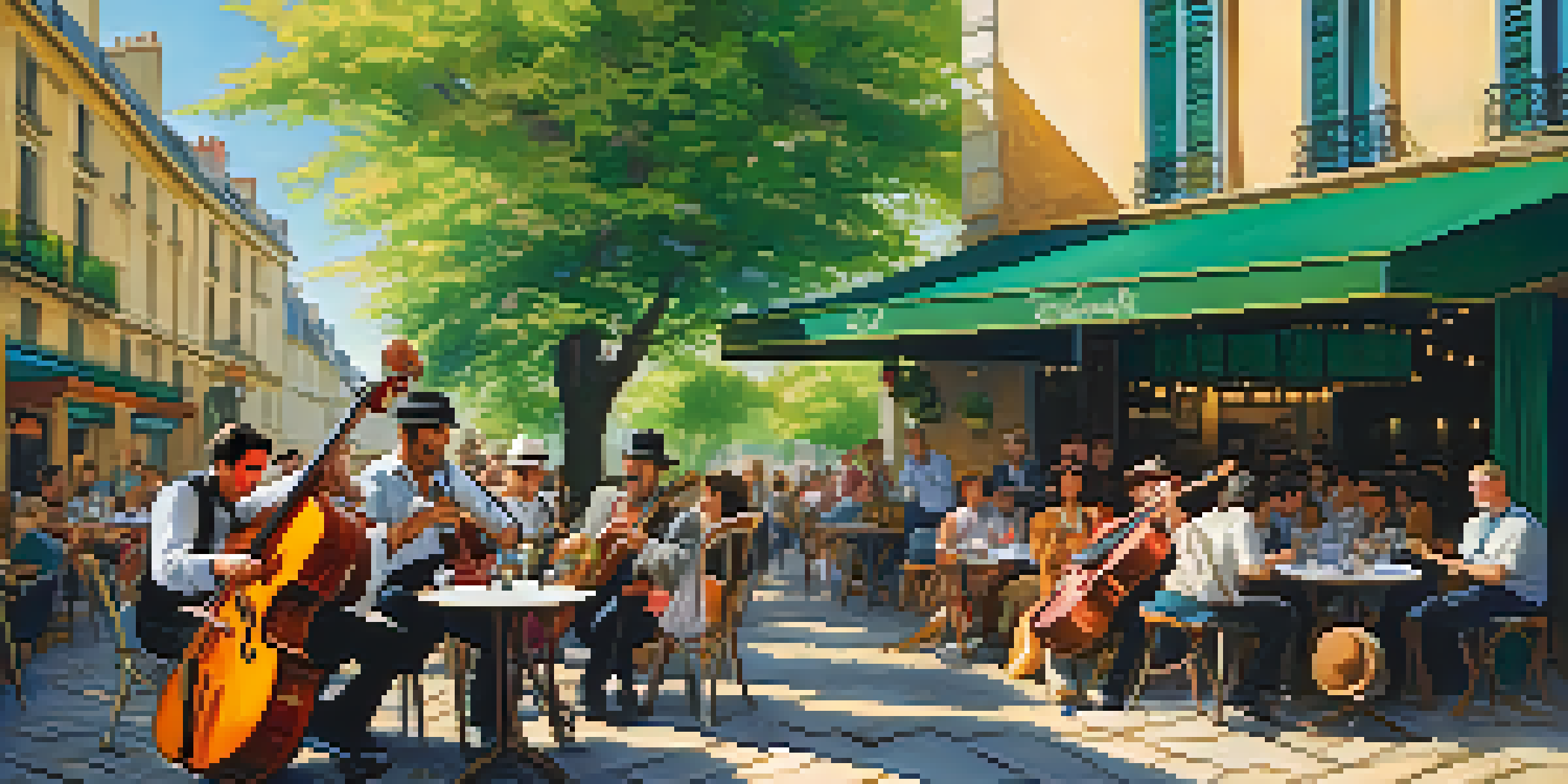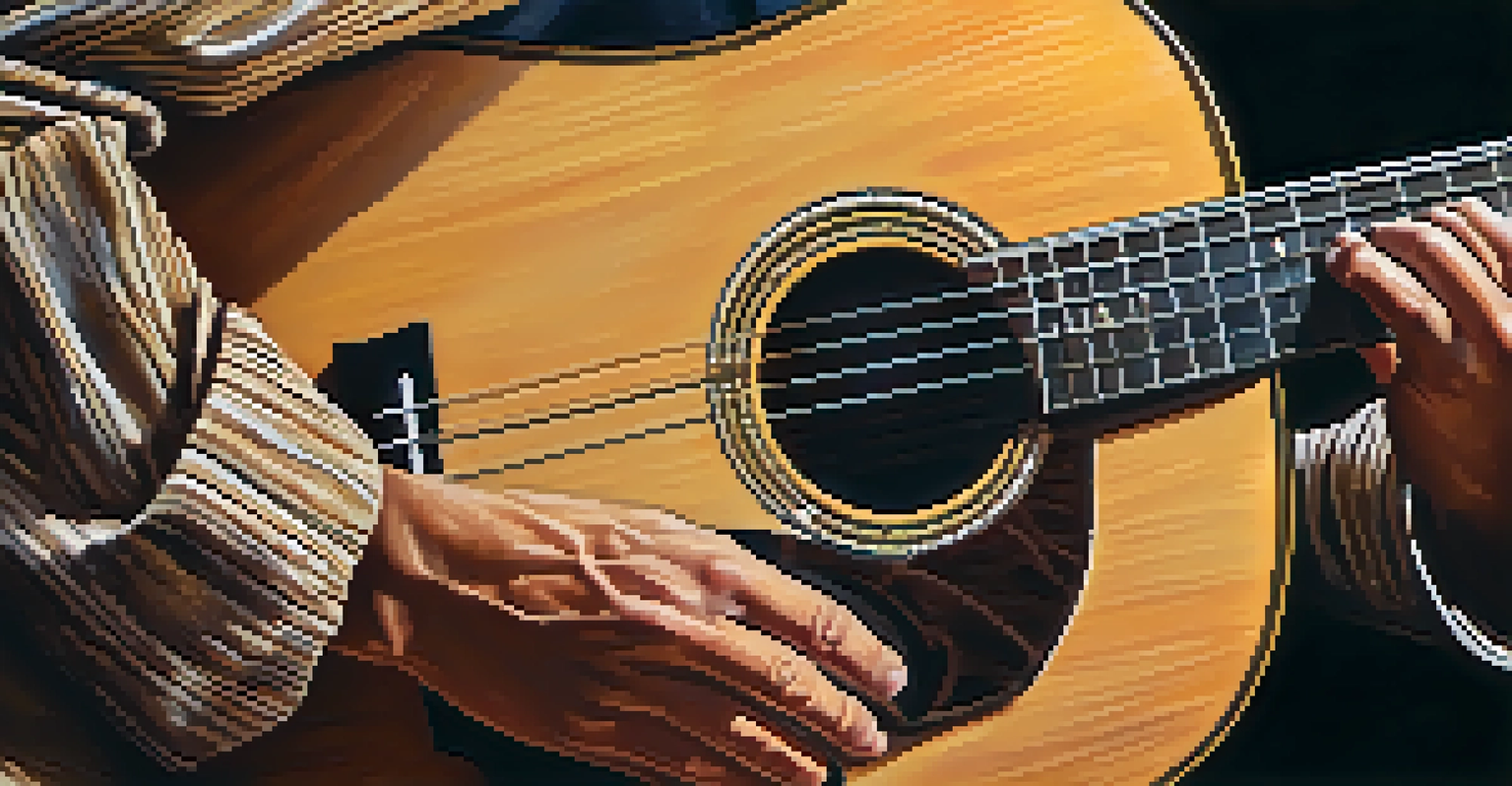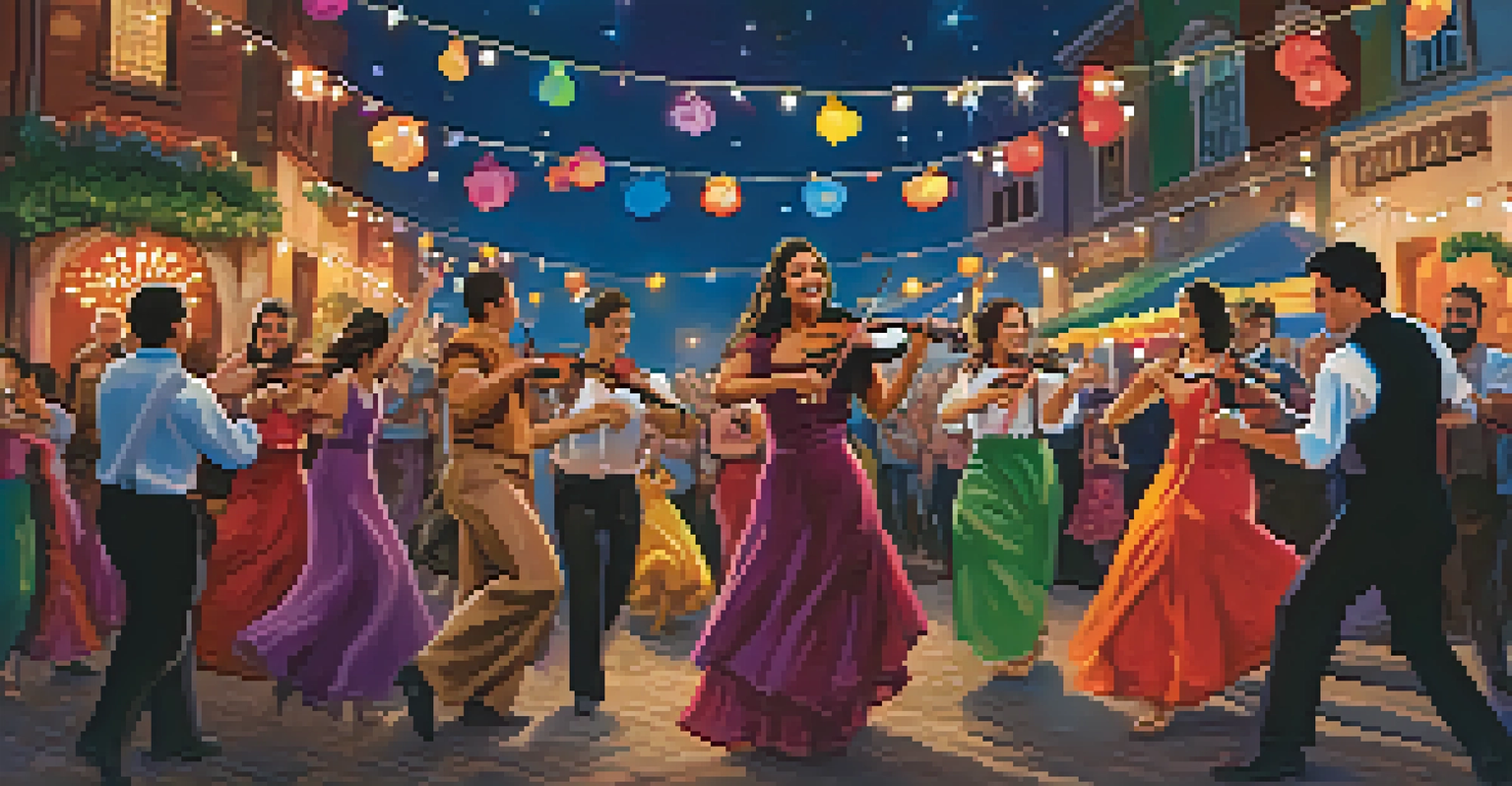Gypsy Jazz: The Cultural Fusion of Romani and Guitar Music

Understanding the Roots of Gypsy Jazz
Gypsy Jazz, also known as 'Jazz Manouche,' has a rich history that interlaces Romani culture with the world of jazz. Originating in the 1930s in France, this genre was popularized by virtuoso guitarist Django Reinhardt. His unique style combined traditional Romani melodies with American jazz rhythms, creating a sound that was both innovative and deeply rooted in cultural tradition.
Music is the universal language of mankind.
The Romani people, with their diverse musical heritage, have long been known for their improvisational skills and expressive performances. Their music often reflects themes of love, longing, and community, which resonate deeply within the Gypsy Jazz genre. This cultural fusion of Romani influences and jazz improvisation creates a distinctive sound that captivates audiences around the world.
As we delve deeper into Gypsy Jazz, it's essential to recognize its significance not just as a music style but as a cultural expression. This genre serves as a bridge, connecting various musical traditions and showcasing the beauty of cultural exchange.
Key Characteristics of Gypsy Jazz Music
One of the defining features of Gypsy Jazz is its infectious rhythm, often driven by a technique called 'la pompe.' This rhythmic strumming pattern provides a robust backbone for improvisation, allowing soloists to shine. It’s much like a dance; the rhythm invites everyone to join in, whether through dancing or simply tapping their feet.

The instrumentation in Gypsy Jazz typically includes guitars, violin, and double bass, with the guitar often taking the lead. The blend of acoustic sounds creates a warm, vibrant atmosphere that’s perfect for both intimate gatherings and lively performances. Each instrument plays a crucial role, working together to create a harmonious yet dynamic sound.
Cultural Roots of Gypsy Jazz
Gypsy Jazz intricately weaves Romani culture with jazz, creating a unique musical expression that reflects love, longing, and community.
Improvisation is at the heart of Gypsy Jazz. Musicians often take turns showcasing their skills, weaving in and out of melodies with ease. This spontaneous nature keeps the music fresh and exciting, making each performance a unique experience, much like a conversation between friends.
The Influence of Django Reinhardt
Django Reinhardt, often hailed as the father of Gypsy Jazz, profoundly impacted the genre with his innovative guitar playing. Despite losing the use of two fingers in a fire, he developed a unique playing style that showcased his extraordinary talent. This resilience and creativity not only shaped his musical journey but also inspired countless musicians.
Jazz is the music of the moment; it is an improvisation, and that is what life is all about.
Reinhardt's collaborations with other jazz musicians, such as violinist Stéphane Grappelli, further popularized Gypsy Jazz. Their partnership blended different musical styles, creating a rich tapestry of sound that appealed to diverse audiences. This collaboration exemplified how cultural fusion can lead to groundbreaking art.
Today, Django's legacy lives on through a new generation of musicians who draw inspiration from his work. His influence can be heard in modern jazz, blues, and even pop music, showcasing the enduring power of his contributions to the world of music.
Gypsy Jazz in Modern Music Scenes
In recent years, Gypsy Jazz has seen a resurgence, with many contemporary musicians embracing its vibrant style. Various festivals around the world celebrate this genre, bringing together artists and fans who share a love for its distinctive sound. These events create a sense of community, where people can connect through music and cultural appreciation.
Artists like Biréli Lagrène and Stochelo Rosenberg have gained recognition for their exceptional skills in Gypsy Jazz, pushing the boundaries of the genre. Their innovative approaches attract new audiences, ensuring that the music remains relevant in today’s diverse musical landscape. They embody the spirit of Gypsy Jazz, merging tradition with modernity.
Django Reinhardt's Lasting Impact
Django Reinhardt revolutionized Gypsy Jazz with his innovative guitar style, inspiring generations of musicians and blending diverse musical influences.
Moreover, Gypsy Jazz has influenced genres beyond its own, infusing elements into world music, folk, and even rock. This cross-pollination of styles highlights the genre's versatility and the universal language of music, where cultural boundaries dissolve in favor of creativity.
Cultural Significance of Gypsy Jazz
Gypsy Jazz is more than just a music genre; it represents a cultural narrative that speaks to the experiences of the Romani people. It showcases their history, struggles, and triumphs, creating a platform for storytelling through music. Each note played can evoke deep emotions, connecting listeners to the rich tapestry of Romani culture.
Through its rhythms and melodies, Gypsy Jazz fosters cultural exchange and appreciation. It invites musicians from different backgrounds to collaborate, creating a shared space for creativity and understanding. This aspect of the genre highlights the importance of community and the power of music to bring people together.
As we explore the cultural significance of Gypsy Jazz, it becomes clear that it is a living testament to the resilience of the Romani spirit. The music continues to evolve, reflecting the changing world while remaining rooted in its heritage.
Learning to Play Gypsy Jazz
For those interested in exploring Gypsy Jazz, learning to play this genre can be a rewarding journey. Many musicians start by mastering the fundamental techniques, such as 'la pompe' and improvisation skills. Online resources and local workshops can provide valuable guidance, helping aspiring musicians get a grasp on this unique style.
Listening to iconic Gypsy Jazz recordings is also a vital part of the learning process. By immersing oneself in the music of Django Reinhardt and his contemporaries, players can develop their ear for the genre's nuances. This practice not only enhances musicality but also deepens appreciation for the cultural roots behind the music.
Modern Revival of Gypsy Jazz
Today, Gypsy Jazz is experiencing a resurgence as contemporary artists embrace its lively style, fostering a sense of community and cultural exchange.
Joining a community of fellow musicians can further enrich the learning experience. Collaborating with others, whether in jam sessions or formal classes, fosters growth and creativity. It’s a chance to share ideas, learn from one another, and keep the spirit of Gypsy Jazz alive.
Conclusion: The Enduring Legacy of Gypsy Jazz
Gypsy Jazz stands as a vibrant testament to cultural fusion, weaving together the threads of Romani heritage and jazz music. Its infectious rhythms and improvisational spirit continue to resonate with audiences around the globe. As it evolves, the genre not only preserves its roots but also embraces new influences that ensure its relevance for generations to come.
The stories told through Gypsy Jazz reflect the resilience and creativity of the Romani people, making it a powerful form of cultural expression. Each performance is a celebration of life, love, and the shared human experience, inviting listeners to connect on a deeper level.

As we appreciate the beauty of Gypsy Jazz, let’s remember its roots and the cultural narratives it carries. This genre not only entertains but also educates, fostering understanding and appreciation for the rich tapestry of music that exists in our world today.